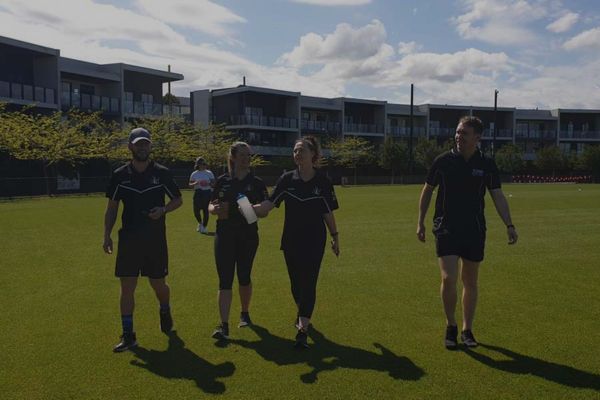Introduction
Being able to move a certain distance in the shortest time possible is advantageous in many sports and is mainly measured using timing gates (Cronin et al., 2007). Sprinting is a major component in most sports and is necessary for success. Individuals who can move faster will be able to beat their opponent to the finish line, to the ball or to a scoring opportunity. Athletes of different sports are required to sprint varied distances, with track athletes sprinting for 100 plus metres, whereas team sports athletes sprint an average of 15 – 21 metres at a time (Andrzejewski et al., 2013; Gabbett, 2012). With sprints usually lasting between two and four seconds (Bangsbo et al., 1991), it is suggested that team sports athletes reach their maximal speeds in a much shorter distance than track athletes. Benton (2000) demonstrates that team sports athletes reach their maximal speed at around 40 metres from a standing start and 29 metres from a flying start, whereas track sprinters continue to accelerate until about 50 metres during a 100-metre sprint (Brown, 2012).
Speed tests are used to solely measure an athlete’s linear speed capability. Sprint tests of 10 – 20 metres are considered to measure the athlete’s acceleration ability, whereas sprint tests of up to 40 metres are used to measure both acceleration ability and maximal velocity (Young et al., 2001). Most court sports (netball, tennis, basketball etc.) use a 20-metre sprint test due to the relevance to the court sizes and actual sprint distances covered by these athletes during games. Field sports (soccer, rugby, hockey etc.) cover a larger distance and due to the pitch size, maximal velocity may be reached in competition games (Duthie et al., 2006). Therefore, for field sports, a 20-metre sprint can be used to measure acceleration ability, or up to 40 metres can be used to measure acceleration ability and maximal velocity.
Assessment of sprinting time can be measured in several ways, with researchers using manual or electronic timing. Manual timing consists of coaches or experienced, trained personnel using hand-held stopwatches, starting the timing when the participant starts moving and stopping when the participant crosses the finish line. However, each individual may have a different interpretation of a starting movement and also, one individual may have a quicker reaction time than another. The positioning of the individual conducting the timing can also affect their vision of the start as they are not able to be in line with both the start and finish at the same time. Due to the potential of human error, manual timing is subject to inaccuracy. Electronic timing is an alternative timing method that eliminates the effect of human error and reaction time. Laser timing gates are the most used method of speed timing for athletes. There are a diverse range of timing gates available, and researchers use different equipment distributed from different countries around the world. Altmann et al. (2015) and Mujika et al. (2009) used a single beam timing system (Timer S4, Austria), whereas Haughen et al. (2015), Cronin et al. (2007) and Duthie et al. (2006) used dual beamed timing systems (Biorun, Norway; Swift Sports Performance, Australia). Alternatively, Haughen et al. (2012) used Omega’s Scan ‘O’ Vision, Brower Timing System, Dartfish Video Timing and Floor Plate Triggering.
When using different timing equipment, the athlete’s starting position should be carefully considered to avoid any premature starts and inaccurate data. For example, if the starting stance involves a forward lean, the athlete could unseeingly break the first timing gate, leading to a false timing, which is why some researchers start the athletes a short distance behind the start line (Moir et al., 2004). Researchers have conducted sprint time trials with a variety of different starting distances including starting on the initial start line and flying starts, starts behind the line, ranging from 0.3 metres up to 30 metres. Due to the difference in starting positions, no comparisons can be made as the tests are not the same as the different lengths of flying starts will have affected the overall times.
The way the athlete stands when starting a sprint test can also affect their overall time as the weight distribution may limit the amount of movement occurring before the start of the sprint, yet other starting positions may allow for a slight gain in momentum before the participants body crosses the start line. The most common stances used in sprint timing are parallel (both feet on the start line), split (leading foot on the start line with other leg back) or false (start in parallel, then drop to split start before moving forward) (Cronin et al., 2007). Other starts include 3-point start, starting from blocks and rocking start.



